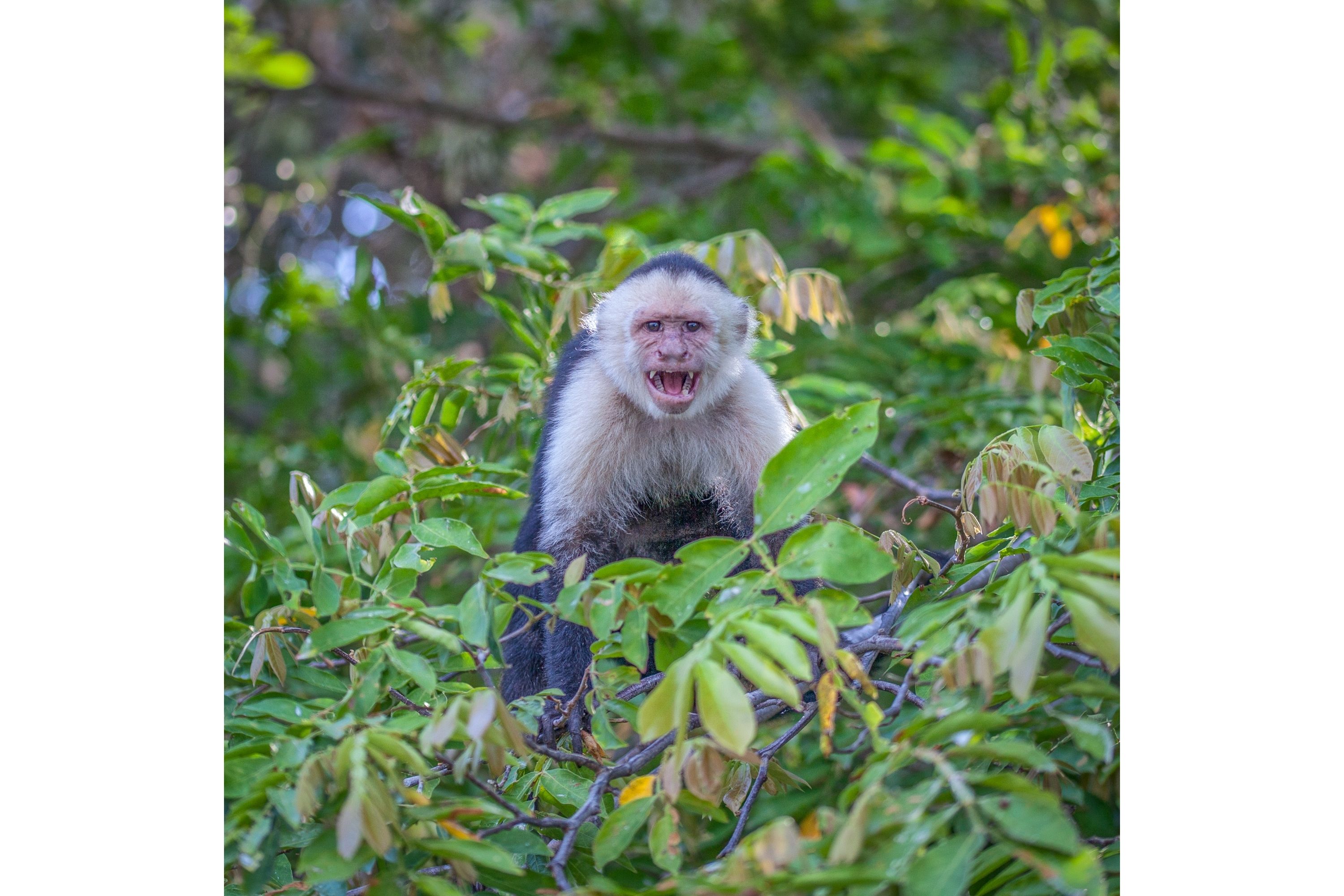Panamanian White-faced Capuchin
(Cebus imitator)

Description
The Panamanian white-faced capuchin (Cebus imitator), also known as the Panamanian white-headed capuchin or Central American white-faced capuchin, is a medium-sized New World monkey of the family Cebidae, subfamily Cebinae. Native to the forests of Central America, the white-faced capuchin is important to rainforest ecology for its role in dispersing seeds and pollen. Among the best known monkeys, the Panamanian white-faced capuchin is recognized as the typical companion to the organ grinder. In recent years the species has become popular in American media, particularly in the Pirates of the Caribbean film series. It is a highly intelligent monkey and has been trained to assist paraplegic persons. It is a medium-sized monkey, weighing up to 3.9 kg (8 lb 10 oz). It is mostly black, but with a pink face and white on much of the front part of the body, giving it its common name. It has a distinctive prehensile tail that is often carried coiled up and is used to help support the monkey when it is feeding beneath a branch. In the wild, the Panamanian white-faced capuchin is versatile, living in many different types of forest, and eating many different types of food, including fruit, other plant material, invertebrates, and small vertebrates. It lives in troops that can exceed 20 animals and include both males and females. It is noted for its tool use, including rubbing plants over its body in an apparent use of herbal medicine, and also using tools as weapons and for getting to food. It is a long-lived monkey, with a maximum recorded age of over 54 years. Panamanian white-faced capuchins are highly social, living in groups of 16 individuals on average, about three quarters of which are females. Groups consists of related females, immigrant males, and offspring. On average, females birth offspring every 27 months even though they mate throughout the year. Females tend to stay within their original group while males leave their natal group when they are 4 years old and change groups every 4 years after. Both male and female capuchins exhibit different dominance behaviors within the group.
Taxonomic tree:







